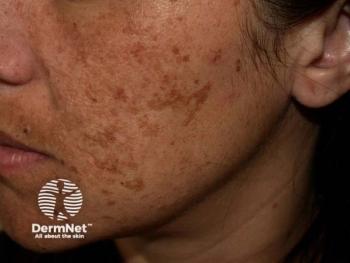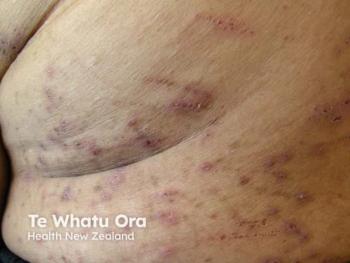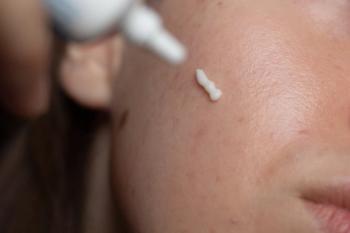
Journal Digest: August 6, 2025
Key Takeaways
- GPT-4o outperformed Gemini in diagnosing actinic keratosis and squamous cell carcinoma, but both models had low negative predictive values, raising concerns about false reassurance.
- Isotretinoin treatment significantly reduced inflammatory cytokine levels in acne patients, with variations in response based on acne severity.
This review of the latest dermatologic studies includes a review of photoprotection in patients with skin of color, the presence of inflammatory cytokines in acne patients after isotretinoin treatment, perceptions of skin-lightening products in medical students, and more.
International Journal of Dermatology:
This study evaluated the diagnostic performance of two large language models, GPT-4o (OpenAI) and Gemini 2.0 Flash (Google), in distinguishing actinic keratosis (AK) from squamous cell carcinoma (SCC) using standardized clinical images. Among 112 patients (84 with SCC, 28 with AK), GPT-4o responded to 100% of cases and showed higher diagnostic accuracy (65.9%) than Gemini (24.8%). GPT-4o also achieved greater sensitivity (64.3% vs. 40%) and predictive values, though both models had low negative predictive values, raising concerns about false reassurance in self-assessment. Gemini responded in only 62% of cases and showed particularly poor sensitivity. While GPT-4o significantly outperformed Gemini, neither model can yet reliably rule out SCC.1
Journal of Dermatological Treatment:
This prospective clinical study investigated the anti-inflammatory effects of oral isotretinoin in 75 patients with moderate to severe acne (Grades II–IV) and 25 healthy controls. Researchers measured serum levels of five key inflammatory cytokines (IL-8, IL-36, TNF-α, TSLP, and TWEAK) before and after eight weeks of 20 mg/day isotretinoin treatment. Acne patients had significantly elevated cytokine levels compared to controls. Post-treatment, IL-8, IL-36, and TWEAK levels were significantly reduced, while TNF-α and TSLP showed reductions primarily in milder acne cases. No significant correlation was found between cytokine levels and acne severity. The findings suggest isotretinoin’s anti-inflammatory effects are partly mediated through suppression of pro-inflammatory cytokines. However, responses varied by acne severity, and the short study duration limited evaluation of long-term outcomes.2
Pediatric Dermatology:
This scoping review examined photoprotection in individuals with skin of color (SOC), who are often undereducated about sun safety despite being at risk for sunburn and skin cancer, including melanoma with higher mortality rates. The review analyzed studies from 2018 to 2022 to identify barriers and behaviors influencing sun protection in SOC populations. Findings revealed that while photoprotection offers clear benefits, SOC individuals often have lower awareness and practice of sun-safe behaviors. Contributing factors include cultural beliefs, family influence, gender roles, education levels, and beauty standards, along with the widespread misconception that darker skin offers complete protection from UV damage.3
Photodermatology, Photoimmunology, & Photomedicine:
This study evaluated a high-resolution in vivo method using hybrid diffuse reflectance spectroscopy (HDRS) to assess sunscreen effectiveness against UVA and high-energy visible (HEV) light. Six commercial sunscreens were tested on 15 subjects, with absorbance spectra measured every 1 nm between 310–450 nm. Results were compared to a lower-resolution method using only four discrete wavelengths with linear interpolation. The high-resolution method revealed significant differences in sunscreen performance, especially in the poorly covered 380–400 nm range (ultralong UVA), which were not captured by the interpolation method. Notably, rankings of sunscreen effectiveness changed depending on the method used, with some products appearing more protective under the lower-resolution approach. The tinted sunscreen, containing iron oxides, offered the highest HEV protection.4
Journal of Cosmetic Dermatology:
This cross-sectional study investigated the knowledge, perceptions, and practices related to skin-lightening products (SLPs) among 305 female medical students in Jordan. Despite demonstrating strong awareness of the ingredients and risks such as hydroquinone, mercury, and steroids, 40.7% of participants reported using SLPs. The most common motivations were treating facial hyperpigmentation and achieving a lighter skin tone. Social media significantly influenced perceptions, with many students acknowledging the role of filters, influencers, and beauty standards in promoting lighter skin. Common adverse effects reported included acne, redness, and skin discoloration. Notably, only 43.5% consulted medical professionals before using these products.5
References
- M. Boostani, G. Pellacani, M. Goldust, et al., “ Diagnosing Actinic Keratosis and Squamous Cell Carcinoma With Large Language Models From Clinical Images,” International Journal of Dermatology (2025): 1–3,
https://doi.org/10.1111/ijd.18000 . - Qi W, Wang R, Khasawneh SMS, Hui F, Liu Y. Levels of several inflammatory cytokines in acne patients before and after isotretinoin therapy: a randomized, controlled clinical trial. J Dermatolog Treat. 2025;36(1):2540594. doi:10.1080/09546634.2025.2540594
- King A, Sabbah SG, Bose R, Heath CR, Silverberg NB. Photoprotection in Skin of Color: A Scoping Review of Barriers, Behaviors, and Pediatric Considerations. Pediatr Dermatol. Published online August 2, 2025. doi:10.1111/pde.16041
- Touti R, Renoux P, Nocairi H, Douezan S, Passeron T, Josso M. Standardized In Vivo Method Using High-Resolution Diffuse Reflectance Spectroscopy for Evaluating Sunscreen Effectiveness Against Ultraviolet A and High-Energy Visible Light. Photodermatol Photoimmunol Photomed. 2025;41(5):e70044. doi:10.1111/phpp.70044
- Qeyam H, Al-Shami R, Al-Rusan A, Alnaimat M. Knowledge, Perceptions, and Practices of Skin-Lightening Products Among Female Medical Students: A Cross-Sectional Study. J Cosmet Dermatol. 2025;24(8):e70380. doi:10.1111/jocd.70380
What new studies have you been involved with or authored? Share with us by emailing
Newsletter
Like what you’re reading? Subscribe to Dermatology Times for weekly updates on therapies, innovations, and real-world practice tips.


















